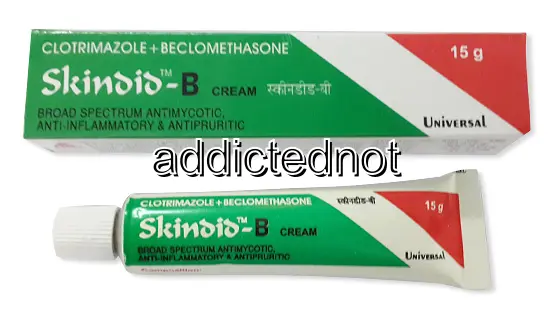| Package | Dosage | Price | Price per Dose | |
|---|---|---|---|---|
| Dosage: 10g | ||||
| 12 tube | 10g | $158.94 | $13.19 | |
| 6 tube | 10g | $79.46 | $13.24 | |
| 4 tube | 10g | $52.40 | $13.31 | |
| 2 tube | 10g | $27.04 | $13.44 | |

Lotrisone Description
Overview of Lotrisone
Lotrisone is a topical medication widely used to treat various fungal infections of the skin. It combines two active ingredients: clotrimazole, an antifungal agent, and betamethasone dipropionate, a potent corticosteroid. This combination helps not only to eliminate the fungus but also to reduce inflammation, redness, and itching commonly associated with skin infections. Available by prescription in the United States, Lotrisone is trusted by healthcare providers for its effectiveness and ease of use.
How It Works
Clotrimazole works by disrupting the cell membrane of fungi, ultimately leading to their death. It is effective against a broad spectrum of fungi, including dermatophytes and yeast species. Betamethasone dipropionate reduces skin inflammation by suppressing immune response, which often alleviates discomfort and improves the appearance of irritated skin. The dual action makes Lotrisone particularly suitable for treating severe or inflamed fungal infections that do not respond to other antifungal medications alone.
Usage and Application
The medication is generally applied to the affected area once or twice daily. Patients are advised to clean and dry the skin thoroughly before application. A thin layer of the medication should be spread evenly over the affected area and surrounding skin. It is important to follow the healthcare provider’s instructions precisely to maximize benefits and minimize potential side effects. Patients should avoid covering the treated area with bandages or dressings unless directed by a healthcare professional, as this may increase absorption and the risk of side effects.
Effectiveness and Patient Reviews
Many users in the United States report that Lotrisone provides quick relief from symptoms such as itching, redness, and scaling. It is especially effective for difficult-to-treat infections like athlete’s foot, ringworm, and candidiasis that involve inflammation. Patients appreciate the convenience of having both antifungal and anti-inflammatory properties in one medication. However, some users note that the medication can cause skin thinning or irritation if used excessively or on sensitive areas.
Possible Side Effects
While generally well-tolerated when used as directed, Lotrisone may cause some side effects. Common reactions include mild burning, stinging, or irritation at the application site. Prolonged use or overuse may lead to skin thinning, stretch marks, or secondary infections. Rarely, allergic reactions such as rash, swelling, or difficulty breathing can occur. It is vital to monitor the skin during treatment and consult a healthcare provider if adverse reactions develop.
Precautions and Considerations
Lotrisone should only be used on the skin and not applied to the face, groin, or underarms unless prescribed by a healthcare professional. Pregnant or breastfeeding women should consult their doctor before use. The medication is not suitable for fungal infections of the scalp or nails. Patients with a history of hypersensitivity to any of the components should avoid using Lotrisone. It is also essential to complete the full course of treatment, even if symptoms improve early, to prevent recurrence.
Summary of Benefits
Overall, Lotrisone is regarded as a reliable treatment option for inflammatory fungal skin conditions. Its unique combination of antifungal and anti-inflammatory agents makes it a preferred choice for many healthcare providers in the USA. Patients often experience noticeable relief of symptoms within days of starting treatment. When used responsibly and as directed, Lotrisone can significantly improve skin health and comfort, helping individuals regain confidence in their skin appearance.